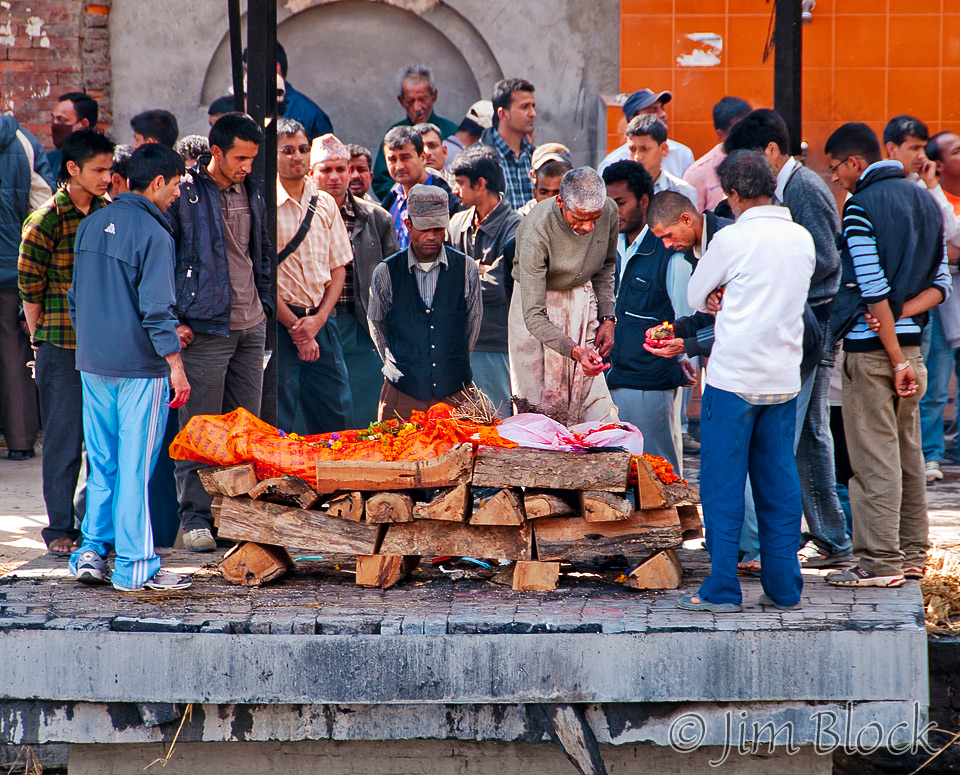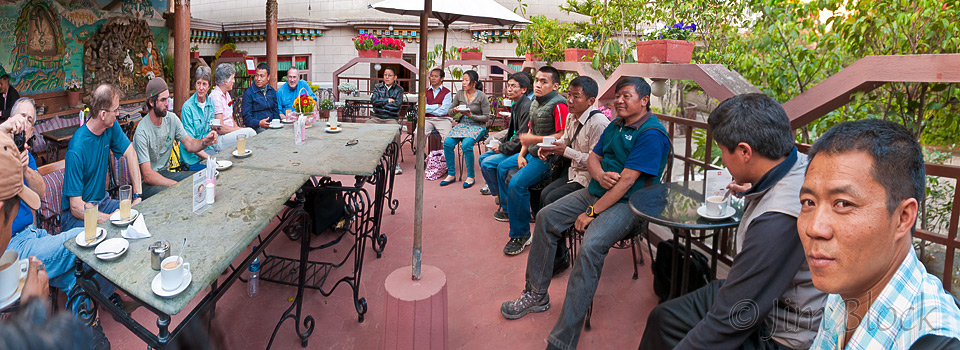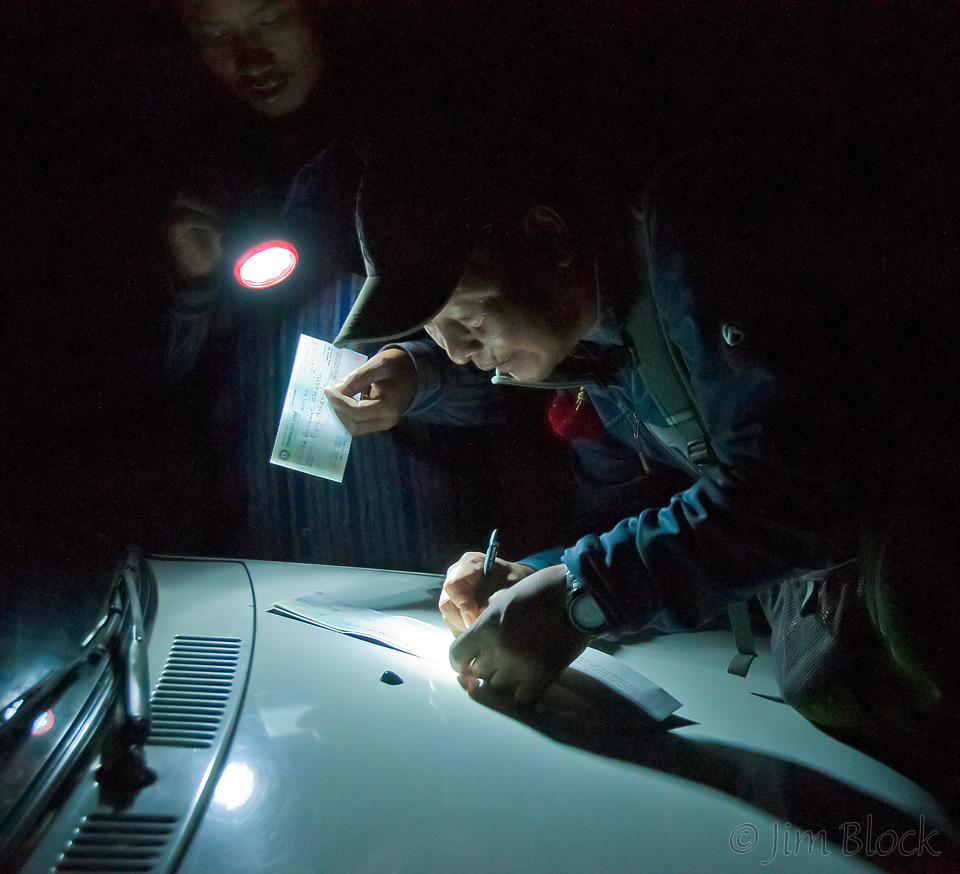My alarm woke me at 5:30 the first morning in Kathmandu. I believe it was the only time I slept later than 4:30 or 5:00 the whole trip. I was tired from the three plane rides. My normal bed time on the trek was 8 PM plus or minus ½ hour — and sometimes earlier.
We spent the day sightseeing in Kathmandu and Patan while waiting for Tim’s son, Kevin, to arrive. It seems the small airline that serves his Hawaiian island is not all that reliable. Kevin wasn’t concerned, but Tim sure was. Kanchan Pandey guided us to three temples: Swayambhu (the “monkey temple”), Pashupatinath (Hindu), and Boudhanath (Buddhist) which dates to the 5th century and has the world’s largest stupa. Boudha Stupa is a UNESCO World Heritage Site.
A lot of the day was spent on a bus, so my strained calf wasn’t too bad. We also visited Patan (my third time) and ate at the museum in Durbar Square there — also my third time. At the Hindi temple we witnessed 7 cremations at various stages. Both Buddhists and Hindus cremate within a few hours of death, day or night. It was quite an intense sight across the river from us.

That evening we spent an hour with 12 people from Nunthala who travelled to Kathmandu to honor Leeli. In order to spend this hour, these folks took 9 days out of their lives — three days walk to Jiri (they walk much faster than we do), a day’s bus ride to Kathmandu, a day in Kathmandu, and 4 days back. Very impressive and moving.

After the speeches and presentations, I was chosen (probably because I had the biggest camera) to travel to a far part of Kathmandu with Leeli and Chhongba to document the purchase of an initial group of metal power poles that Leeli’s foundation was purchasing for the people living in and near Nunthala in the remote Taksindu region.
The wooden poles, carrying power from the mini-hydro plant near Nunthala and supplying a number of communities, were rotting and falling down. Cutting trees to replace them would further strip the area, but the villagers needed the minimal electricity that the hydro plant supplies. So Leeli was raising money for metal poles.
The poles, 200-300 of them, would be trucked to Phaplu then carried for several days by the people of Nunthala where they will paint and install them in concrete. Chhongba signing a payment check by flashlight on the hood of our taxi was an interesting sight. After the trek we saw a number of finished poles, and Chhongba ordered and paid for more.

Here is a slide show of our day in Kathmandu and Patan before the trek.













































